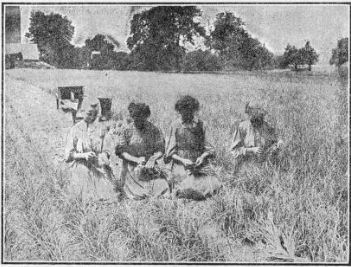228. Packing
Description
This section is from the book "Vegetable Gardening", by Ralph L. Watts. Also available from Amazon: Vegetable Gardening.
228. Packing
There are three main considerations in the packing of vegetables after they have been cleaned and graded and a desirable package selected.
(1) The appearance of the product must be attractive when offered to the public. Attractiveness is secured not only by cleaning, grading and using the proper package, but the vegetables must be tastefully arranged. It often pays to place each specimen in the most careful manner. The value of skillful arrangement has been clearly demonstrated by the California fruit growers. Not only should the top layer show to an advantage, but the arrangement should be pleasing down to the bottom. A pleasing appearance may also be secured by lining the package with white paper; by using a border or cover of laced or fancy colored paper; by covering with red mosquito netting; by wrapping each specimen with soft paper; by tying bunched vegetables, as celery, asparagus, rhubarb and the root crops, with blue or red tape; and by branding or labeling wrappers, covers or packages. (229).
(2) Honest packing is absolutely essential. This means uniformity of grade throughout the package, and it prohibits "topping." The crates or baskets should be as large as they are represented and packed full.
(3) The specimens should be placed in such a manner that they will remain firm and in position until the market is reached, to avoid bruising.

Fig. 51. BUNCHING ONIONS IN THE FIELD.
As previously indicated (224) the work of packing or bunching is sometimes done in the field. (Figure 51.) Packing requires close supervision. When a force of laborers is at work it is desirable to give each one a number and require everyone to place a slip of paper in each crate or basket giving the number of the packer. This system secures better work and makes it possible to locate careless packers when complaints are made. Packing may be done by the piece if desired.
Continue to:
- prev: 227. Grading
- Table of Contents
- next: 229. Advertising
Tags
plants, crops, gardening, cultivated, harvesting, food ,greenhouses, fertiliser, vegitables
